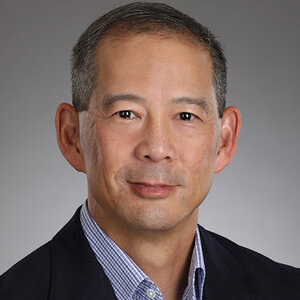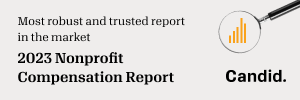Norman Chen, CEO, The Asian American Foundation: Creating a greater sense of belonging for all AAPIs
May 4, 2022
The Asian American Foundation (TAAF) was launched in May 2021—amid a rise in anti-Asian American and Pacific Islander (AAPI) hate and violence—to help solve for the longstanding lack of investment provided to AAPI communities and to build the infrastructure needed to improve AAPI advocacy, power, and representation. That month, TAAF announced that through its AAPI Giving Challenge and donations from its board, it secured nearly $1.1 billion in donations and in-kind commitments from partners—the largest philanthropic commitment in history fully focused on supporting AAPI communities—including $125 million from board members to support AAPI organizations and causes over the next five years. TAAF’s work focuses on several priority areas: anti-hate, data and research, education, narrative change, unlocking resources, and racial solidarity.
Norman Chen has served as CEO of TAAF since November 2021. Before joining TAAF, Chen co-founded Leading Asian Americans to Unite for Change (LAAUNCH) in September 2020 and created the Social Tracking of Asian Americans in the U.S. (STAATUS) Index, a landmark study of American attitudes toward Asian Americans. Prior to his leadership in AAPI advocacy and philanthropy, Chen spent his career as an entrepreneur, investor, and community leader building innovative life sciences companies and supporting nonprofit organizations in both the United States and Asia.
PND asked Chen about TAAF’s mission to address the historic lack of philanthropic investment in AAPI communities through key initiatives such as the AAPI Giving Challenge, the factors behind the historic underinvestment in AAPI communities, TAAF’s Anti-Hate National Network and AAPI Action Centers, and key findings from the 2022 STAATUS Index.
Philanthropy News Digest: TAAF’s mission is “to serve the community in their pursuit of belonging and prosperity that is free from discrimination, slander, and violence.” The AAPI community is often seen by other Americans as quickly attaining prosperity—i.e., the model minority myth—while continuing to be perceived as foreign, as other, generation after generation. How does the foundation work to address the tension between those two components of its mission?
Norman Chen: Prosperity is a core piece of TAAF’s mission because we are addressing often overlooked social and economic challenges in AAPI communities—one being that we are the most economically divided racial group in the U.S., with the highest median household income and the highest intra-racial group income disparity. Contrary to the model minority myth, which perpetuates a misguided perception about AAPI socioeconomic success, prosperity is not equally accessible across AAPI communities or to AAPI immigrants who come to the U.S. in pursuit of a better life for their families.
Belonging is part and parcel of our work because AAPIs continue to face other harmful stereotypes such as being seen as perpetual foreigners. For example, according to the 2021 STAATUS Index, one in five Americans agreed with the statement that Asian Americans as a group are “more loyal to their countries of origin than to the U.S.”
For these reasons, TAAF has sought to close critical gaps in support and make strategic investments in our communities. We are committed to accelerating prosperity and creating a greater sense of belonging for all AAPIs by bringing to bear more cross-sector support from partners who are also committed to these efforts.
PND: The foundation aims to address the historic underinvestment in AAPI communities, which received just 0.2 percent of total U.S. grantmaking in 2018. Why do you think AAPI communities have been so invisible to the philanthropic sector?
NC: A number of factors have contributed to the philanthropic sector’s longstanding underinvestment in AAPI communities, including misguided perceptions about AAPI socioeconomic success and the lack of disaggregated data about our communities’ experiences. Since our launch last May, TAAF has focused its efforts on strategic priority areas such as narrative change, education, and data and research to address these root causes of underinvestment.
For example, TAAF worked with Sesame Workshop to develop the first Asian-American Muppet, Ji-Young, as an investment in storytelling that promotes positive and diverse AAPI narratives in the media. TAAF has also supported Asian Americans Advancing Justice | Chicago and the Asian American Caucus Education Fund in Illinois as they implement the TEAACH Act to seed the creation of K-12 curriculum that reflects AAPIs as part of the American story. The philanthropic sector must mobilize to turn the tide, and it’s going to take the support of not only TAAF but also other foundations, corporations, and philanthropic leaders.
PND: TAAF succeeded in raising $1.1 billion in the first few weeks after its launch in 2021, from both inside and outside the AAPI community. Were there factors in addition to the rise in—and increased awareness of—anti-AAPI hate and violence that led to the surge in support? Has that momentum continued, and/or do you expect it to continue?
We wanted the challenge to be a welcoming and flexible way for partners to decide how they want to support AAPI causes—whether it be through direct donations to AAPI organizations or initiatives, through in-kind commitments, or through investments in their own AAPI workforces and internal programs.
NC: TAAF launched its AAPI Giving Challenge to bring to bear more resources for AAPI communities than ever before by inviting philanthropies, businesses, and individuals to participate in a five-year commitment to directly support AAPI communities. Part of the early success of the initiative can be attributed to its design and the ask it proposes to partners: We wanted the challenge to be a welcoming and flexible way for partners to decide how they want to support AAPI causes—whether it be through direct donations to AAPI organizations or initiatives, through in-kind commitments, or through investments in their own AAPI workforces and internal programs. The flexibility of the ask itself offered us the opportunity to meet each partner where they were at, based on their interest in the moment. Some of our Giving Challenge partners decided to give directly to TAAF, some made donations or in-kind commitments of their own choosing, and some have sought TAAF’s help in allocating and implementing their commitments over the next five years. Our hope is more partners will join the Giving Challenge in the future to keep this momentum going because our communities’ needs cannot be met with just one wave of support—there needs to be a sustained response over time.
PND: Last September, TAAF announced a dual approach to tackling hate, establishing an Anti-Hate National Network to support coordination and collaboration among diverse organizations while also piloting local AAPI Action Centers in Chicago, New York, and Oakland. Can you share a little about those initiatives?
NC: Since TAAF’s launch, the organization has committed over $7 million to our anti-hate efforts, taking a dual approach by building a new model for tackling hate nationally through our Anti-Hate National Network and locally through our AAPI Action Centers. Our Action Center and National Network’s approach seeks to stitch together a coordinated ecosystem of partners advancing anti-hate measures at the national level while also taking action locally in the communities where hate incidents are actually occurring.
As a start to building out this anti-hate approach, TAAF piloted Action Centers in Chicago, New York, and Oakland to better understand how anti-AAPI hate has uniquely impacted various parts of the country. TAAF has worked with these Action Centers and other National Network partners to create and scale hate prevention and tracking tools, share best practices between national grantees and local AAPI Action Centers, and overall strengthen response processes to keep our communities better protected. Some of our grantees draw on decades of experience and so we wanted to help them share best practices with one another regarding their multi-pronged approaches to combating hate—so that together we can all help foster lasting change.
Our Action Center and National Network’s approach seeks to stitch together a coordinated ecosystem of partners advancing anti-hate measures at the national level while also taking action locally in the communities where hate incidents are actually occurring.
PND: What led you to co-found LAAUNCH? Was the impetus a personal experience with anti-AAPI hate, or had you always been thinking about the need “to engage and empower Asian Americans to fight racism, increase representation, and share community resources” as the mission states?
NC: The motivation behind my work has been shaped by my journey as an Asian American in the U.S., growing up and attending school on both the East and West Coasts. However, it wasn’t until I spent 20 years working in Asia as an adult that I experienced an environment in which my heritage was fully celebrated and there was no glass ceiling for people who shared the same race or ethnicity as me. When I returned to the U.S. 10 years ago, the contrast of being back in the minority became very clear, and I wanted to do more to help instill a deeper sense of belonging, as I had felt in Asia, for AAPIs in our country. These personal experiences of mine, plus the alarming rates of anti-AAPI hate over the past two years, motivated me to serve my communities by co-founding LAAUNCH with several close friends, and now leading our efforts at TAAF.
PND: Coming up on the one-year anniversary of its launch, what are TAAF’s top priorities for its second year? What are the greatest challenges you face?
NC: In our first year as an organization, TAAF undertook a number of grantmaking priorities and initiatives from launching our Anti-Hate National Network and activating partnerships through the AAPI Giving Challenge, to helping improve the way AAPI history is taught in public schools. Our efforts have been in line with our mission—to combat hate and build belonging and prosperity.
With the continued surge in anti-AAPI hate, we remain focused on working with our local and national partners to find innovative ways to track, respond to, and prevent anti-AAPI racism. In our first year, we’ve kicked off several initiatives across our strategic focus areas of anti-hate, data and research, education, and narrative change. We will further develop those initiatives in our second year and beyond, particularly as the need to mobilize against anti-AAPI hate persists.
We need a broad, growing coalition of supporters and allies to stand up for their AAPI neighbors, friends, and colleagues. Until the work is done, TAAF will continue to be a catalyzing force to create greater belonging and prosperity for all AAPIs.
PND: The just-released 2022 STAATUS Index (51 pages, PDF) found that 71 percent of Asian-American respondents said their community was discriminated against in the United States, down from 80 percent in the 2021 survey. While that data point would seem to be an improvement, only 29 percent of Asian Americans “completely agreed” that they felt they belonged and were accepted—with the youngest respondents the least likely to agree—compared with 33 percent of Black Americans, 42 percent of Latinx Americans, and 61 percent of white Americans. What are the implications of these findings, especially for the younger generation?
AAPI youth, for instance, need to be able to see themselves and their experiences better represented and valued, which this year’s results demonstrate is rarely the case.
NC: What these findings underscore is that a sense of belonging, or the lack thereof, is a much greater force than any other singular issue impacting our communities. AAPIs should not feel alienated in our own country, and yet this year’s STAATUS Index makes clear that is the case—and at alarming rates. AAPI youth, for instance, need to be able to see themselves and their experiences better represented and valued, which this year’s results demonstrate is rarely the case. Because that lack of belonging touches upon and is reflected in so many issues facing AAPI communities today—be it anti-AAPI hate, economic inequality, or underrepresentation in education, media, and the arts—it is a core part of TAAF’s mission. That pursuit of a greater sense of belonging is also why we are partnering with LAAUNCH and AAPI research organizations to raise awareness about the experiences of our communities and to pursue actionable programming that tackles bias against Asian Americans in the U.S.
PND: The 2022 STAATUS Index also revealed that, when asked to choose from three solutions to anti-Asian racism, Asian-American respondents were more likely to select “stronger laws and greater protection for Asian Americans” (41 percent) than “more education” (36 percent) or “more interaction between Asian Americans and others” (19 percent), while all other groups were substantially more likely to select “more education.” What does that difference in perception tell you about the solutions needed?
NC: It is not surprising that “stronger laws and greater protection” was the most selected choice among Asian-American respondents, given the current rates of hate and violence targeting our communities. This is a difficult time to focus on other types of solutions to anti-AAPI racism when you are constantly worried about your own safety and that of your loved ones. TAAF has focused a large share of our efforts in our first year on anti-hate solutions specifically for this reason to help advance hate tracking, prevention, and response measures that keep AAPIs safer in their own neighborhoods. TAAF has also made investments in education, data and research, and narrative change work regarding AAPIs to address the root causes of harmful anti-AAPI attitudes because the drivers of hate are often complex and combating them requires a holistic approach.
—Kyoko Uchida





